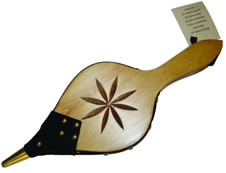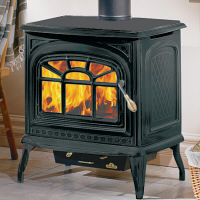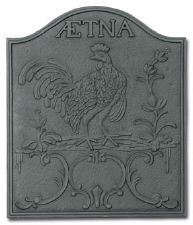When it comes to heating your home you want to be sure that you purchase the appropriate heating system for your home. When you look at the description for a wood stove you will see that it heats in BTUs.
A BTU is a British Thermal Unit. This is a measure of how much heat the stove puts out.
Sometimes you see the measurement in kW or Kilowatts.
The output you require is dependent on the size of the room to be heated. To determine the cubic meters of the space to be heated you will need to use a metric ruler and measure the length, width, and height of the room you wish to heat (in meters). Multiply the three measurements. The number you get is your cubic meters.
Once you have that measurement you have the cubic meters of the room. To heat a 25 cubic meter space it takes approximately 1kW if the room is well insulated. If it is not then 1kW will heat a 15 cubic meter average insulated room, of a 10 cubic meter poorly insulated room.
When you have the initial measurements you multiply them all together and divide by the insulation figures listed above. Here is an example:
If the room is 6 meters wide, 7 meters long, and 3 meters tall your cubic meter space is 126. Let’s assume the room is insulated fairly well, but not excellent meaning it falls in the average category. We’ll now take 126 and divide it by 15 cubic meters. This means it will take approximately 8.4 kW to heat that room.
Now as we have already mentioned the units may be given in BTUs for the stove you’re looking at. To convert kW to BTU you’ll need this conversion:
1 kW or kWh (same thing) = 3412.3 BTU/hr
So to convert this example to BTUs then take 8.4 kW and multiply it by 3412.3 BTUs and you’ll get 28,681.17 BTUs/hr.
But to help you out a little most of the
wood stoves we have listed on
Wood Stove Outlet also have the square footage that the stove can heat listed as well. So if you know the square footage of your home, that may help you, but as far as ceiling heights, and taking insulation conditions into consideration, BTUs are really the best measurement you can do to determine appropriate stove size.
None of this really matters though if you have a room that has a lot of windows, drafty doorways, etc. Weather proofing your home and adding more insulation will help you keep heat in your home.
If you are buying a wood stove more for decorative purposes rather than for the heat, make sure you do not buy a stove that will put out too much heat. If you are running that stove at lower outputs the efficiency will be poor, possibly cause flue problems including condensation and reduced visual appeal due to smaller flames and under performing air-wash. You are better to have a stove that has slightly less output than you require so that the stove is working hard all the time, resulting in more flames and cleaner glass.
Before buying and installing any
wood burning stoves you should have your chimney and flue inspected by a trained, certified
chimney sweep. Your chimney may have a low integrity that prevents you from safely burning a fire in that stove. Also call your insurance company and talk to them about adding that a
wood burning stove or
fireplace to your home owner’s insurance policy. If you decide to invest in a wood stove then you will want to be sure to
properly maintain and upkeep the stove.




















